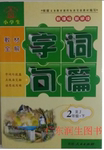题目内容
【题目】阅读理解
Disposing(处理) of waste has been a problem since humans started producing it. As more and more people choose to live close together in cities, the waste-disposal problem becomes increasingly difficult.
During the eighteenth century, it was usual for several neighboring towns to get together to select a faraway spot as a dumpsite. Residents or trash haulers(垃圾托运者) would transport household rubbish, rotted wood, and old possessions to the site. Periodically(定期的) some of the trash was burned and the rest was buried. The unpleasant sights and smells caused no problem because nobody lived close by.
Factories, mills, and other industrial sites also had waste to be disposed of. Those located on rivers often just dumped the unwanted remains into the water. Others built huge burners with chimneys to deal with the problem.
Several facts make these choices unacceptable to modern society. The first problem is space. Dumps, which are now called landfills, are most needed in heavily populated areas. Such areas rarely have empty land suitable for this purpose. Property is either too expensive or too close to residential(住宅区的)neighborhoods. Long-distance trash hauling has been a common practice, but once farm areas are refusing to accept rubbish from elsewhere, cheap land within trucking distance of major city areas is almost nonexistent.
Awareness of pollution dangers has resulted in more strict rules of waste disposal. Pollution of rivers, ground water, land and air is a price people can no longer pay to get rid of waste. The amount of waste, however, continues to grow.
Recycling efforts have become commonplace, and many towns require their people to take part. Even the most efficient recycling programs, however, can hope to deal with only about 50 percent of a city's reusable waste.
(1)The most suitable title for this passage would be ______.
A.Waste Disposal Problem
B.Waste Pollution Dangers
C.Ways of Getting Rid of Waste
D.Places for Disposing Waste
(2)During the 18th century, people disposed their waste in many ways EXCEPT for ______.
A.burying it
B.burning it
C.recycling it
D.throwing it into rivers
(3)What can be inferred from the fourth paragraph?
A.Farm areas accept waste from the city in modern society.
B.There is cheap land to bury waste in modem society.
C.Ways to deal with waste in modem society stay the same.
D.It is difficult to find space to bury waste in modem society.
【答案】
(1)A
(2)C
(3)C
【解析】文章主要讨论垃圾处理的问题。
(1)本题考查对于全文主旨大意的把握并要求我们据此选择最佳标题。文章主要讨论垃圾处理的问题(A项),至于处理垃圾的地点(D项)、垃圾污染的危害(B项)和处理垃圾的方式(C项)都是垃圾处理问题的一个方面,不能以偏概全。根据句意可知选A。
(2) 细节理解题。recycle意为“循环利用”。对于垃圾的循环利用是最近才开始的一项技术,18世纪的时候是没有的。文章第二、三段明确提到其余三种垃圾处理方法。根据句意可知选C。
(3) 细节理解题。文章第四段提到landfills(垃圾掩埋法)和long-distance trash hauling(垃圾长途拖运),可见现代社会人们所使用的垃圾处理方法还和以前一样。根据句意可知选C。

 教材全解字词句篇系列答案
教材全解字词句篇系列答案